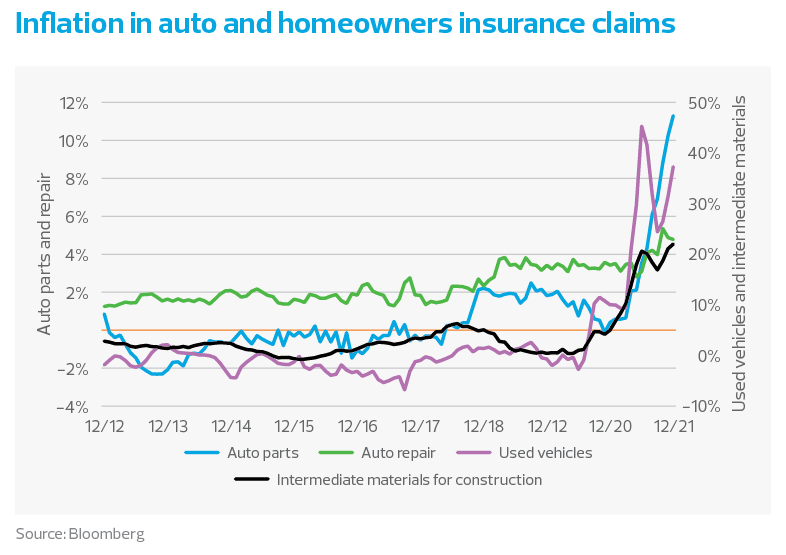Social inflation
The second side of the inflation coin that poses a growing threat to insurers is social inflation. This term is widely used by the insurance industry to describe rising claims costs over and above the economic inflation factors mentioned above, influenced by societal anti-corporate sentiment, trends and behaviors toward social responsibility. Understanding the numerous trends driving social inflation will help insurers proactively navigate the litigious environment the industry is facing.
Perhaps the most significant of these forces are public sentiment, tort reform and third-party litigation funding. Shifting attitudes about social injustices, inequalities and large corporations can factor into juror responses in claims cases, for instance. According to a 2020 study published by the American Transportation Research Institute, nuclear verdictsy, those with awards greater than $10 millions early doubled between 2010 and 2018 in insurance claim cases. Such ripple effects of social inflation can be hugely consequential for insurance pricing, actuarial work, underwriting, valuations and claims.
In addition to public sentiment, tort reform is driving social inflation. Tort reforms are designed to provide fair compensation and control costs. These types of reforms can limit how much a plaintiff can collect for noneconomic and punitive damages. Many state legislatures have struck down these types of caps on damages. Tort reform has also brought more challenges to statutes of limitations for lawsuits arising out of accident or injury claims. The statute of limitations is a legally established limitation period - ypically one to six years depending on the state - to pursue a legal claim. Extending the statute of limitations can potentially result in longer claims cycles, higher defense costs and higher jury awards.
Another contributing factor to social inflation is third-party litigation funding. Firms in this space provide funds to plaintiffs that could potentially result in large payouts in exchange for a percentage of any awards. These firms typically structure the investment as a prepaid forward contract instead of a loan to capitalize on gain tax benefits and are not restricted by a legal code of ethics. Third-party litigation funding might incentivize plaintiffs to pursue prolonged case settlements, hold out for larger recoveries or potentially increase unnecessary medical treatment options, for instance. Third-party litigation funding is a fast-growing multibillion-dollar global industry disrupting the insurance industry. According to a recent report by Swiss Re, third-party litigation funding totaled $17 billion in 2021, up 16% from 2020 despite pandemic-related delays and disruptions.
What can insurers do?
This inflationary environment is hitting the insurance industry hard in supply chain constraints, labor shortages and increasing litigation costs. Insurers are accelerating their business transformation plans centered around three primary themes to mitigate these risks: data, technology and talent.
Risk mitigation starts with data. Insurers use several methods to collect and analyze substantial amounts of information, such as process mining, statistical modeling and forecasting, and applying machine learning and algorithms. Data-driven insights help assess the capacity and performance of an insurer's network of suppliers and vendors, improve their ability to assess risk more accurately, optimize productivity and control costs.
Insurance is a heavy task- and transaction-based industry, and much of these tasks are still done manually. The mass exodus of skilled workers and unexpected retirements can pose workers compensation-related risks. To counter future supply chain disruptions and social inflation, insurers are accelerating their digital transformation strategies, including expansion of their vendor networks and partnerships, application of intelligent workflows and automation of underwriting tasks. Companies need to exploit technology to operate more efficiently and accurately assess risks.
Much like other industries are navigating the labor shortage, many insurers are paying higher wages, offering increased benefits and more work flexibility. Staying competitive in this environment requires sophisticated talent acquisition and retention strategies that go well beyond wage considerations. Companies need discipline and consistency in creating clearly defined and achievable career pathways through mentoring, upskilling and training to address skill and knowledge gaps.
The takeaway
The multifaceted effects of inflation on the insurance sector will continue to be an issue that companies need to navigate. Still, those that think strategically about how to use data and technology to boost efficiency and more holistically cultivate talent will likely be the most formidable competition.



